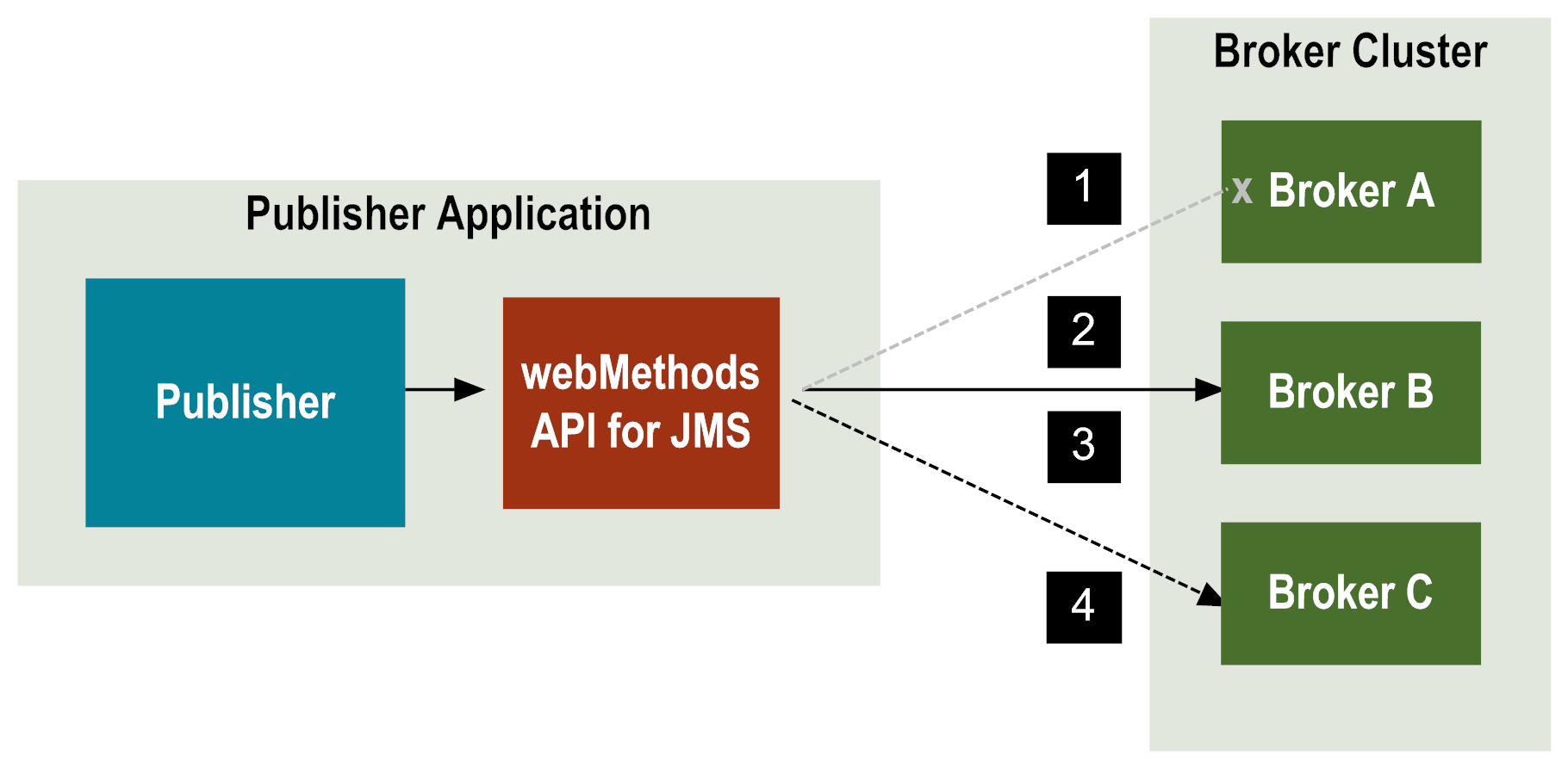

Label | Description |
1 | Broker A goes offline. webMethods API for JMS throws a connection exception and JMS client application catches the connection exception and reconnects. |
2 | The failover mechanism searches for the next available Broker in the cluster to which messages can be routed; this is Broker B. |
3 | Subsequent messages are routed to Broker B. Even if the Broker A comes back online, the messages will continue to be sent to Broker B. When Broker A comes back online, Broker A will be included in the list of available Brokers for message distribution. If Broker B experiences an outage or if the publisher client re-establishes the connection to the cluster, the messages are routed back to Broker A. |
4 | No messages are routed to Broker C until Broker B experiences an outage and Broker A is also not available. |